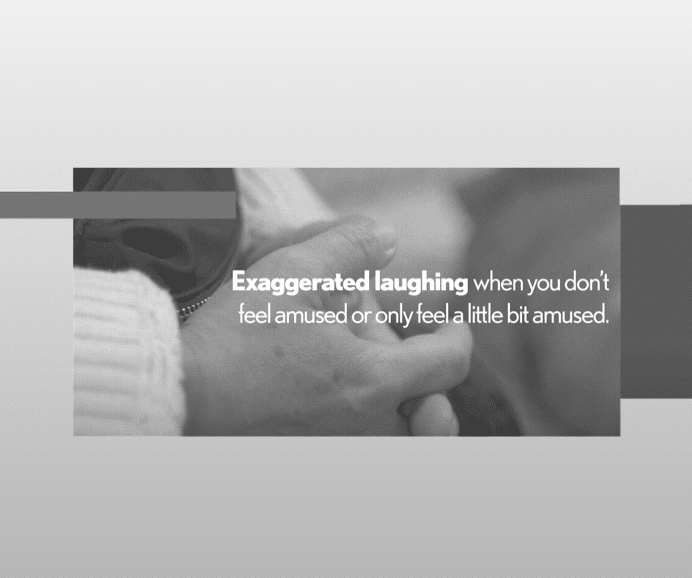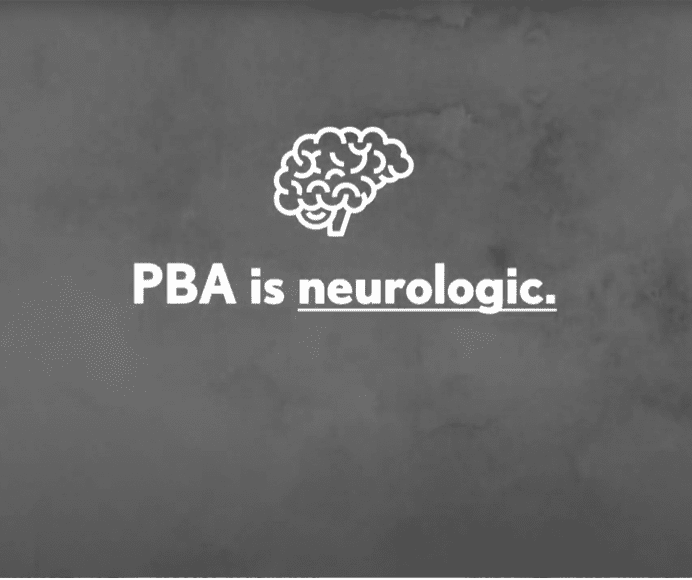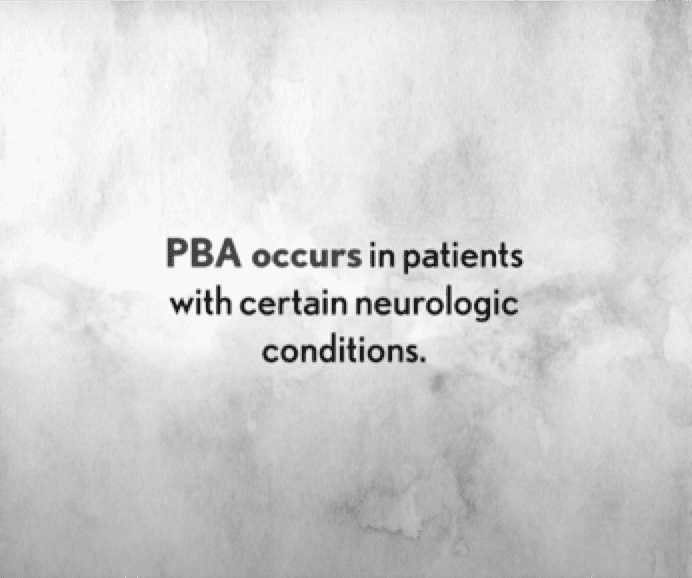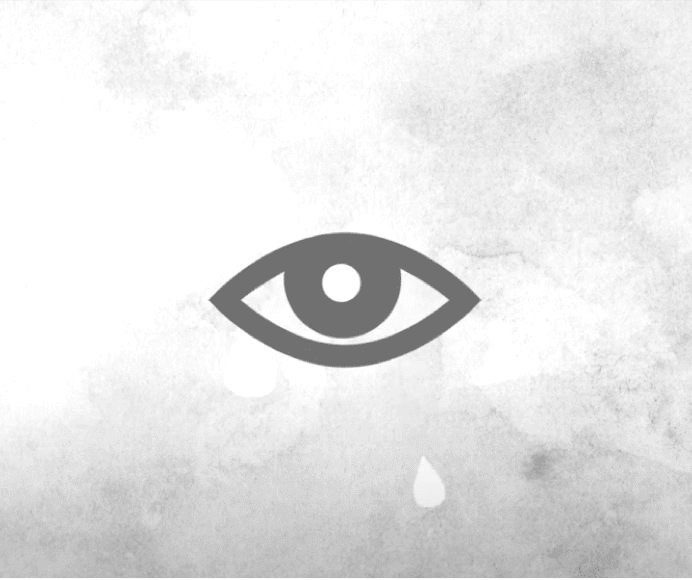Educate
yourself and loved ones
If you want to learn more about Pseudobulbar Affect (PBA), look no further. Below you’ll find FAQs and other resources to help you better understand PBA.


All ambassadors are real patients living with PBA or caregivers for real patients living with PBA.
PBA Frequently Asked Questions
Pseudobulbar Affect, or PBA, is a medical condition that causes sudden, frequent, uncontrollable crying and/or laughing episodes that don’t match how the patient is feeling. Many patients report that the crying and/or laughing they experience with PBA feels different than their crying and/or laughing normally does. It can happen in people living with a brain injury or certain neurologic conditions.
There are 6 common primary conditions associated with PBA: traumatic brain injury (TBI), stroke, multiple sclerosis (MS), Alzheimer disease/dementia, amyotrophic lateral sclerosis (ALS), and Parkinson’s disease. While these are the most common, PBA can also occur with other neurologic conditions.
No. PBA cannot occur without first having a neurologic condition or brain injury.
It is estimated that 2 million people in the US with neurologic conditions or traumatic brain injury have been diagnosed with PBA and up to 7 million have symptoms suggestive of PBA.*
*When considering patients with any of 6 common neurologic conditions associated with PBA, it is estimated that 37%, or an estimated 7.1 million Americans, have symptoms suggestive of PBA as defined by a CNS-LS (Center for Neurologic Study-Lability Scale) score of ≥13 and 9.4% of patients, or an estimated 1.8 million Americans, with CNS-LS scores of ≥21. The presence of PBA symptoms was defined as a CNS-LS score of ≥13 and a more restrictive definition was also evaluated using CNS-LS ≥21. The CNS-LS was validated as a PBA screening tool in ALS and MS populations. A CNS-LS score of ≥13 merits further diagnostic assessment.
PBA is not depression. It’s important to understand that they are separate medical conditions. Some people can have both PBA and depression. Both conditions are treatable and should be diagnosed by the patient’s healthcare provider and managed separately. Watch this video to learn more about how PBA and depression are different.
The CNS-LS is a self-administered questionnaire designed to be completed by the patient or caregiver. Questions consist of subscales for laughter (4 items) and crying (3 items). Each question is scored on a 5-point scale (1=applies never, 5=applies most of the time). Total scores can range from 7 (no symptoms) to 35 (maximum). A CNS-LS score of ≥13 may suggest the presence of signs and symptoms of PBA, defined by sudden, frequent, and uncontrollable episodes of laughing and/or crying.
No, only a doctor can diagnose PBA. The CNS-LS (PBA Quiz) was developed by healthcare professionals to help doctors determine whether a person is having PBA symptoms. It has been validated in ALS (amyotrophic lateral sclerosis) and MS (multiple sclerosis) patient populations.
Any physician who is knowledgeable about PBA can diagnose. However, there are physicians who are more familiar with this area. These include:
- Neurologist
- Psychiatrist
- Internist
- Neuropsychiatrist
- Physical medicine & rehabilitation (aka, Physiatrist)
Advocating for yourself is important, and your healthcare providers, such as your neurologist, primary care physician, or psychiatrist, want to hear from you so they can help. When you talk about your episodes and the impact they have on your life, be specific and don’t hold back. The more details you can provide about your experience and the effects that episodes have on you and your loved ones, the easier it will be for your healthcare provider to understand what you are experiencing. Looking for more ways to prepare for your healthcare appointment? Check out these tips for talking to your doctor.

What Is PBA?
What does the definition of PBA actually mean? Watch this video for a breakdown.

How Are PBA and Depression Different?
Learn more about what makes PBA and depression different and how it’s possible to have both PBA and depression at the same time.

The Primary Conditions Associated With PBA
It’s important to understand the primary conditions associated with PBA because it can occur in patients with certain neurologic conditions or brain injury.
Additional resources
MLR-PBA-US-0793-1022
